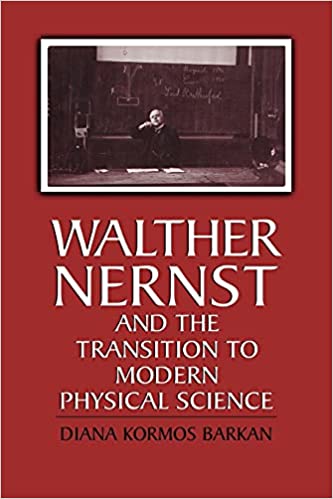 |
Walther Nernst And the Transition to Modern Physical Science
Diana Kormos Barkan Cambridge University Press, 1999 ISBN: 0-521-44456-x |
Walther Nernst did much more than generate the famous Nernst equation that neuroscience students learn to use to calculate the electrical potential across a neuron’s plasma membrane. In fact, this biography barely mentions this achievement (pg. 149, top) and focuses, rather, on his larger body of work, including the heat theorem that ultimately earned him his Nobel Prize. Although it does cover his whole life, this story mostly centers around his scientific contributions within the context of the burgeoning scientific and technological spheres emerging in the Prussian/German empire at the turn of the 20th century. Likewise, we get a detailed glimpse of his interactions with many luminaries of the time, such as Wilhelm Ostwald, Jacobus van’t Hoff, Svante Arrhenius, Max Planck and Albert Einstein. As such, this biography offers a rich and detailed view of science happening and evolving, and in particular how the fields of chemistry and physics grudgingly intersected to produce what today we know as physical chemistry. A word of caution though, this account is somewhat technical, so the reader would benefit from having some working knowledge of chemistry, physics, calculus and German (a fair number of quotes and references are kept in their original language).
Oh, and did you know that Nernst was a gifted inventor? Not only did he work on the incandescent lamp, but he built many of his own scientific instruments, and ended his career producing the forerunner to the modern electronic synthesizer. If for no other reason, readers should at least glimpse this biography to learn a bit about such a fascinating person.
